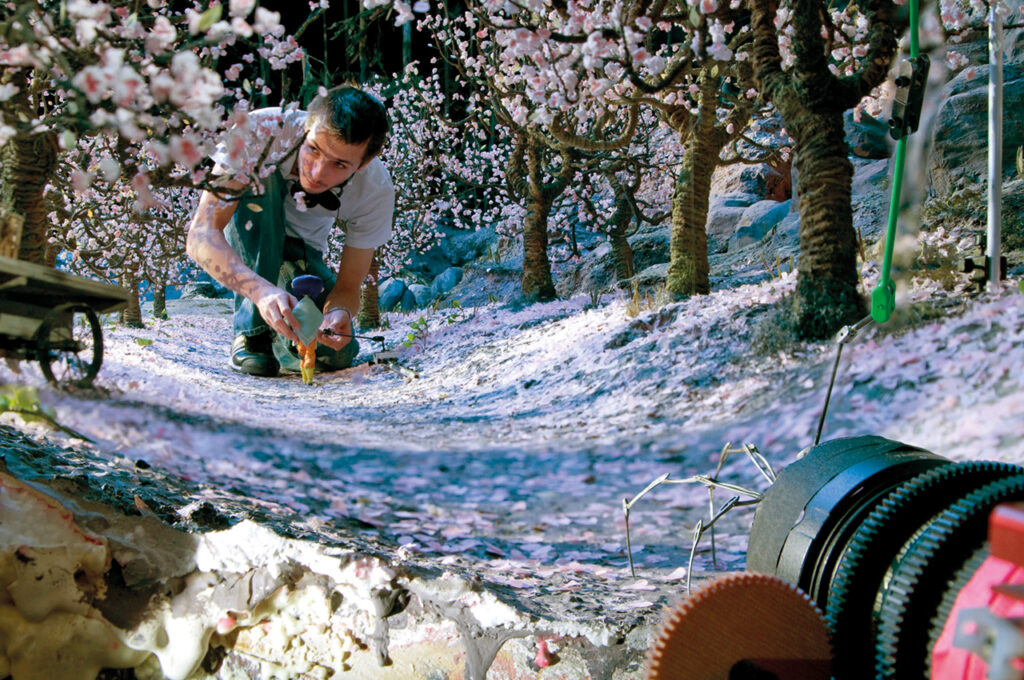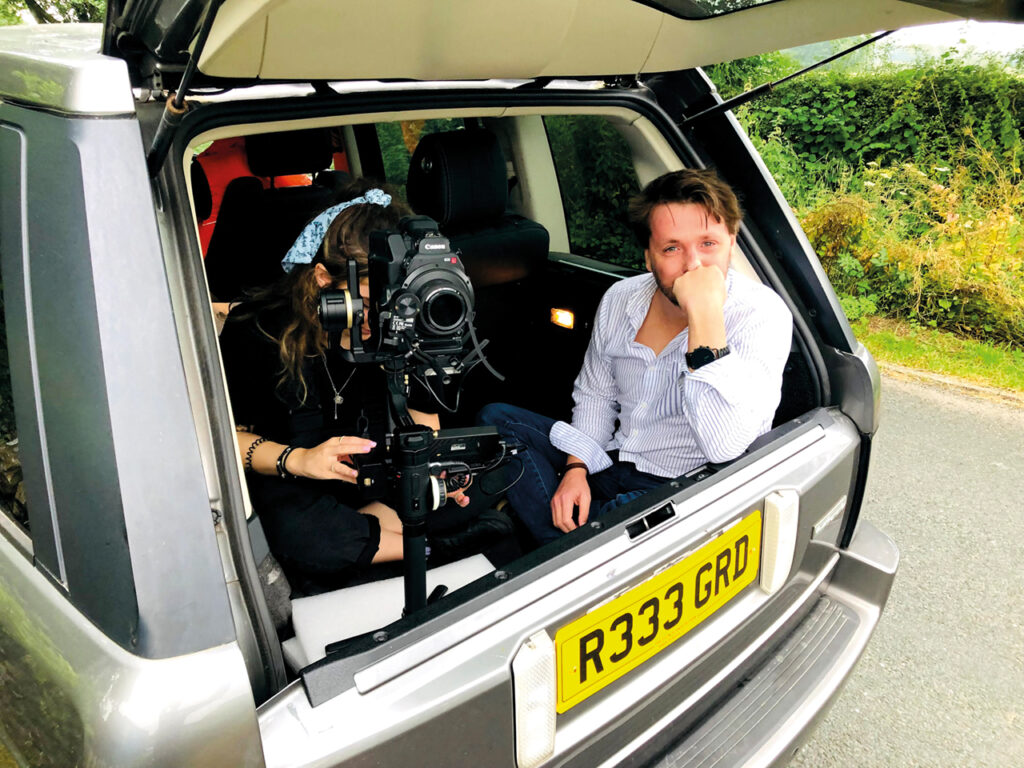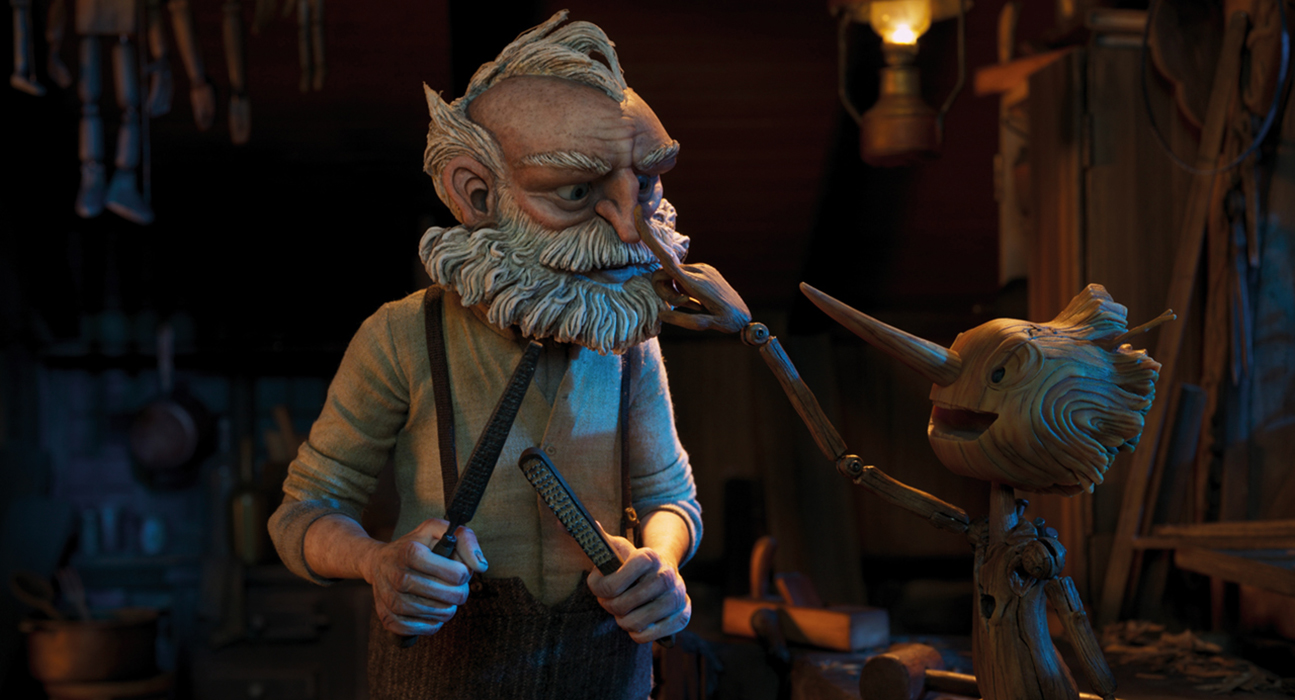Frame by frame
Animator Chris Tootell talks about how his creative drive took him from Preston to Oscar-winning Pinocchio and back again
It’s often said that one phone call can change your life, and that was certainly the case for Preston-born animator Chris Tootell in 2019. He’d just returned home from years spent working in the US on hit movies like Coraline and was all set to get married and settle down in the North West with his girlfriend, Jenny. Then the phone rang with a fateful request.
“Guillermo del Toro has got the Pinocchio movie and we’re going into production. Do you want to come back and do it?” That’s how the animator recalls the opening gambit.
“I couldn’t say no, of course. It was Guillermo Del Toro. Pinocchio in stop motion. People had been talking about it for years. I knew that if Pinocchio was ever made I would drop everything and work on it.”
Tootell repacked his bags, wedding plans were paused and he jetted back to the States for another year to work with the acclaimed film-maker.
“All of the animators worked directly with Guillermo. It was one of the exciting things about the process. He made it clear that he wanted to be involved in the day-to-day directing duties on set. Every shot I did on the movie I was first directed by Guillermo where I would ask questions, suggest things, clarify actions, then the rest of the directing duties would be given by Mark Gustafsen, a brilliant creative director. Guillermo was particularly easy to talk to. He was always excited to hear your take on the scenes and wanted your input as an animator.”
This collaborative process paid off, particularly in one of the key scenes animated by Tootell, in which Gepetto and Cricket discover Pinocchio has left with the carnival.
“It’s an emotional scene with a lot of reaction animation and ‘thinking’ from Gepetto,” explains Tootell. “It’s a notoriously difficult thing to do in animation, give a sense of what a character is thinking. We worked hard to get all our poses and expressions just right. I’m proud of that scene.”
Everything was going great. Then Covid hit.
“It was the first half of the production, so I was on for the early stuff and then through into production. It was 2020 when it started, so it was Covid and lockdowns and just… everything. My fiancé Jenny and I spent a year apart and that was difficult.”

Difficult, but also perhaps an inevitable part of the process for someone who was seemingly born for stop motion, that classic animation technique that involves moving models and puppets one painstaking frame at a time. Being born in the North West of England was a huge advantage for somebody destined to work in stop motion, thanks to the region’s remarkable history with the medium.
“I grew up in Preston and went to school in Blackburn,” says Tootell. “I was a pretty good doodler, doing little cartoons and things like that. Art was always my passion. When I was 15 or 16, I got a chance to do work experience at Cosgrove Hall.”
The legendary Manchester-based studio behind kids’ classics such as Chorlton and the Wheelies, Danger Mouse and Wind in the Willows was, in the 1980s and 1990s, a beacon for creative youngsters from miles around.
“I didn’t particularly want to be a cartoonist,” Tootell says. “I knew that I wanted to do something involving the camera because I was obsessed with cameras as a kid. During those four weeks of work experience a producer called Chris Bowden basically put me in all the different departments of a stop motion animation studio.”
Cosgrove Hall was producing a show called Brambly Hedge at the time and Tootell was charged with the laborious task of cutting out little leaves and sticking them to trees. In some departments he was sweeping floors and in others he was making tea but all the while he was moving in and out of studio spaces and observing the animators.
“I remember thinking, I understand that role. I know what that is. Some of the other stuff, I didn’t know. It seems alien to me, like, the writers or the voice artists and the director dealing with things. But I understood animation.
“They had the puppet, and they were moving it and taking a frame and moving it. I kept saying to Chris: ‘Can you get me a little test or something? Can I go and try this out?’ And he said no for about three weeks. And then in the final week they gave me a week’s worth of testing with an old puppet from a show called Truckers. Out of the blue on the final day, the producer came in and said: ‘Do you want a job?’”
The following week Tootell was working on a Canadian show called Rotten Ralph. “I did my first shot on that show. I asked the director, is that really gonna be in the show? And they went: ‘Yeah!’”
Duly smitten with the process, Tootell worked on about a dozen different kids TV shows while at Cosgrove Hall and, after taking time out to go to university, he was working on the relaunched Postman Pat when the animator’s grapevine brought word than none other than Tim Burton was crewing up for an animated film in London called The Corpse Bride.
“It was the first stop motion film that had been made in a long time,” Tootell says. “I got a bunch of work together, sent it down, and got rejected. Chris Bowen, who was still my producer, said: ‘Look, the stuff that you’re doing on kids’ TV shows, it’s not quite good enough quality because you don’t have enough time. We’ll give you a puppet and you can work on your own showreel stuff after hours.’”
Thanks to this, Tootell was able to put together a showreel more suited to feature films, and landed a full animator position on The Corpse Bride, which led to work at Aardman in Bristol, before being asked to fly to Portland, Oregon, to work for startup animation studio Laika on its debut movie – the Neil Gaiman adaptation Coraline.
“They were trying to poach animators from the UK because we had a big stop motion community,” Tootell recalls. “I stayed with them for three films – Coraline, ParaNorman and The Box Trolls.”
From there he moved to LA to work on Charlie Kaufman’s Oscar-nominated arthouse animated movie Anomalisa, and then started directing on promotional videos for Lego Star Wars and Lego Batman, made using the actual toys. But he was yearning for home comforts, and found Hollywood less than appealing, especially after being nurtured in the smaller supportive UK animation industry.
“It’s quite cut-throat, the community out there,” he admits. “The mindset is so different. It was so competitive that it was difficult. You were always pitted up against your peers.”
That’s why, when Tootell finally returned home from Pinocchio to set up his own company, Drawing Board Studios in Preston, it was refreshing to receive a warm homecoming welcome from his old peers.

“Richard Pickers, who’s the head of the Mackinnon & Saunders studio, I’ve known him for years and years,” Tootell says. “Without realising it, I’m telling him that I’m starting a company that’s going to, you know, be a competitor. If I get my way, I’m going to be competing for the same sort of projects. But he just said: ‘Oh, come over, have a look at what we’re doing.’ That’s what the community’s like. It’s great.”
Right now, Tootell is keeping a cautious eye on the buzz surrounding Pinocchio, with a Bafta already won and a nomination for Best Animated Feature Film at the Academy Awards, due to be decided on 13 March (it won).
“All six movies I’ve animated on have been nominated for Oscars but it seems that there’s something different about this one. I feel that Netflix think they have a very good chance and so are pushing their campaign. It’s incredibly exciting. The crew are chatting with each other on our various groups about the prospect of winning.
“Ultimately the work itself is why you do this job, but winning means we’re more likely to get funding for another project. Stop motion winning a big award is important because it proves that this rather old-school process is still a valid method of creating films.”
So what will Drawing Board, the latest addition to the North West’s stop motion legacy, actually be doing? Tootell excitedly explains his ambitious plans to use the medium to put his home turf on screen in new ways.
“We have preliminary funding for a short film. I love Kes. One of my all-time favourite films. I think there’s a modern way to tell that story.
“There’s a sense of northern stories being a little bit grim, that industrial thing, that I think we need to escape. I’d like to tell a northern story in a different way.”
Even more than regional pride, it seems one of the main goals of Drawing Board will be to recreate the same opportunities Tootell enjoyed at the start of his career to keep the cycle of local creators moving.
“The future is definitely about finding new talent in the North West and getting new projects from anybody, of any age, who’s not had their chance yet. They’re just waiting to be found and given a bit of money and a bit of time and a bit of expertise.”
Guillermo del Toro’s Pinocchio is available now on Netflix

Leave a reply
Your email address will not be published.